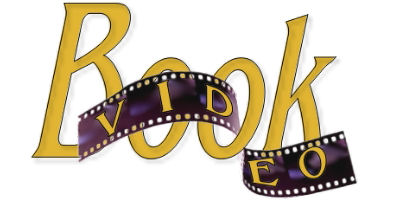
J. M. Hochstetler is the author
of Daughter of Liberty, Native Son, and Wind
of the Spirit, the first three books of the American Patriot
Series set during the American Revolution. Book 4, Crucible
of War, will release in the fall of 2011. Her novel One
Holy Night, a contemporary retelling of the Christmas story,
has been named the Christian Small Publishers 2009 Book of the Year.
She is a member of ACFW, CAN, and AWSA. You can find her on the Web at
www.jmhochstetler.com
as well as on her blogs
americanpatriotseries.blogspot.com
and oneholynight.blogspot.com,
and
on Facebook, ShoutLife, and various other social networking sites.
.
|
|
Writing a Video Book Trailer Script |
 Wind Of The Spirit |
Video Book Trailers have become so popular that nowadays it seems as if just about every release comes equipped with one. I’ve noticed considerable variation in quality—some look pretty amateurish, while others could qualify as professional movie trailer productions. Being the highly competitive person I am, that made the temptation to get a trailer into the running too hard to resist. Last November I created one for One Holy Night without having the faintest clue what I was doing. It turned out so well and got such positive feedback that in June I put one together for my latest release, Wind of the Spirit, book three of my American Patriot Series. It has also garnered great reviews. Since then I’ve refurbished the One Holy Night trailer by adding a few new images and smoothing out some of the effects and transitions. In the process of fiddling and tweaking, I learned a lot not only about the mechanics of creating a trailer, but also about the importance of developing a really good script before you do anything else. If you’d like a more extensive discussion of how to go about creating an effective trailer, back in June I blogged about it on my American Patriot Series blog. Go to americanpatriotseries.blogspot.com, and look for the June ’09 posts. Following is a brief overview on writing a script. The script is a road map or bible for the production. It captures the central focus of the story in as few high-impact words and images as possible (speed is of the essence in our attention-deficient culture) and also tells you what images you’re going to need. So first, decide what your book’s central focus is and stick to that. Eliminate any secondary storylines and irrelevant details. Some people recommend keeping trailers to under one minute, but most of those I’ve looked at run longer. My goal was to keep the running time right around one and a half minutes. That’s about what the One Holy Night trailer came in at, and that felt neither too long nor too short. I decided to start with some advertising copy I’d written, keeping in mind the images that would be needed to illustrate each point. I condensed and punched up the wording, ending up with the following raw text. “A spy for General Washington, Elizabeth Howard is drawn into the very maw of war, where disaster all but ends the American rebellion. Yet her heart is fixed on Jonathan Carleton, still missing more than a year after he disappeared into the wilderness. Now the Shawnee war chief White Eagle, Carleton is caught in a bitter war of his own—against white settlers encroaching on Shawnee lands, the love of the beautiful widow Blue Sky, and the schemes of the vengeful shaman Wolfslayer. Can Elizabeth’s love bridge the miles that separate them and the savage bonds that threaten to tear him forever from her arms? The nation’s epic struggle for freedom continues . . .” After adding the introduction and credits, I ended up with eighteen frames. Now that I had a script I was satisfied with, it was pretty easy to determine the images I’d need for each frame. The important consideration became to keep the trailer moving along briskly, while allowing enough time for viewers to read the text on each frame. Take a look at the results, and if you’d like further details, check out my blog. And then jump in and create one yourself, whether your book is published or not. It’s amazing what you can do with Windows Movie Maker, even when, like me, you start out pretty clueless about how it works. There are lots of other programs available too, some that will allow you to create more complex effects than I was able to. If you like playing on the computer, you’re going to have a ton of fun! |







